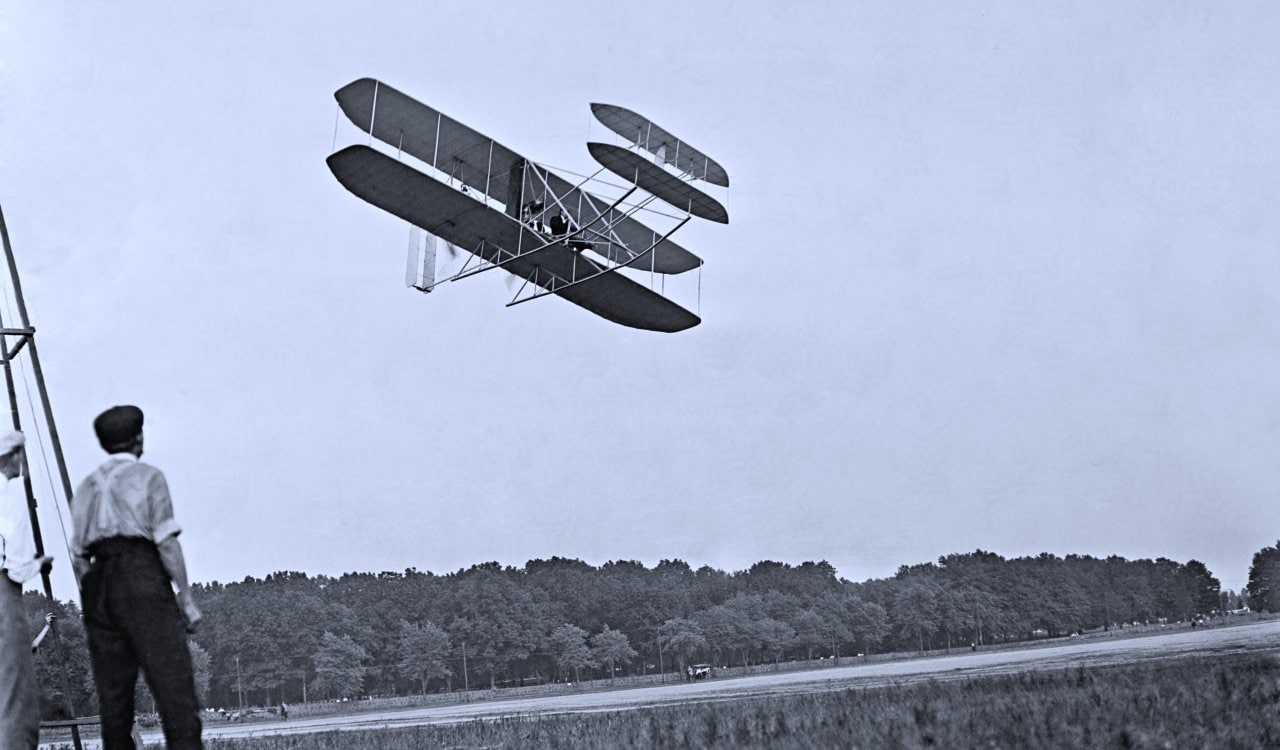There have been several amazing things that photographs captured. It is incredible that the photographic camera itself dates back all the way to the mid-to-late 1770s. Of course, the very first permanent photograph was not taken until 1826. The photo was captured by Joseph Nicéphore Niépce using a sliding wooden box camera, which had been made by Charles & Vincent Chevalier in Paris, France. Since then, we’ve tried to take photographs of everything possible. We developed better lenses, managed to get color, and even made our images move with sound attached! All of this allowed us to capture vintage science photographs people can still see today.
Wright Brothers Airplane Test

Year Captured: 1909
Orville and Wilbur Wright had managed to invent the first airplane that managed to stay in the air after taking off. It took them quite a while to make it happen, as these two men were not aviation specialists in the slightest. They mostly knew the world of bikes, as that was their career before this. Yet in December of 1903, they took flight and made history with their Kitty Hawk Flyer, creating the first powered flight.
In 1908, they were contacted by the U.S. Army to develop a two-seater plane for them. The Army saw the potential of airplanes and knew that they could be a huge asset in wartime. They did not know how right they would be. This image captures a test flight for the new plane. The Wright Brothers were paid $25,000 for the job. Taking inflation into account, that equates to roughly $600,000 in today’s money.
